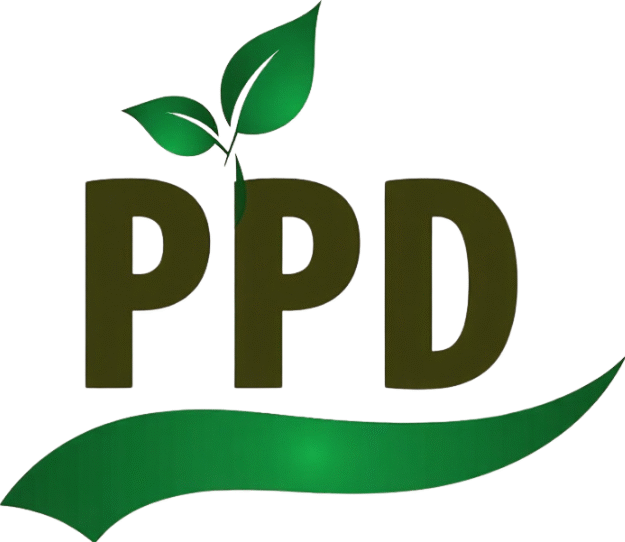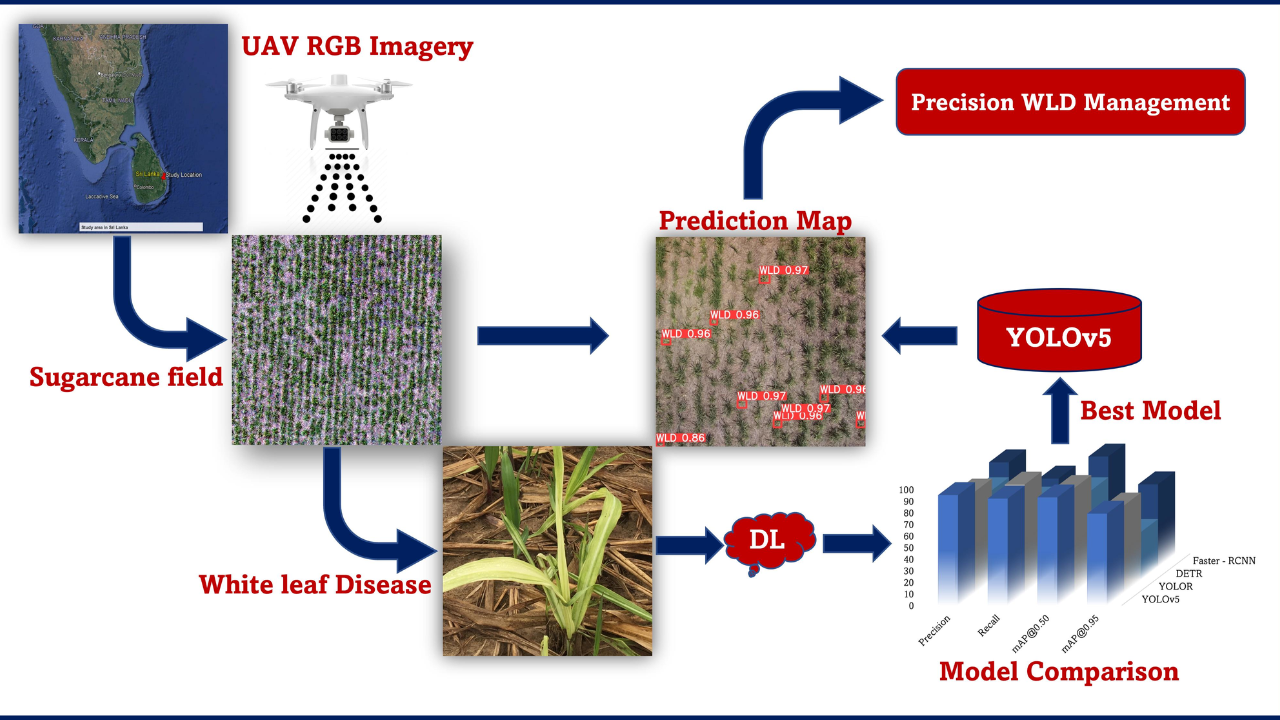
Myanmar’s agriculture, the backbone of its rural economy, is increasingly under threat from a surge of emerging plant diseases. These diseases, driven by climate change, intensified trade, and evolving pathogens, jeopardize national food security and export potential. As outbreaks become more frequent and unpredictable, early detection, accurate diagnosis, and rapid response have become crucial in disease management.
This article explores the current landscape of emerging plant diseases in Myanmar and how the country’s surveillance and response systems, led by the Plant Protection Division (PPD), are adapting to this complex challenge.
What Are Emerging Plant Diseases?
Emerging plant diseases are:
- Newly identified diseases that were previously unknown in a region.
- Re-emerging diseases that had been controlled but are returning due to environmental or agronomic changes.
- Invasive pathogens introduced via trade or movement of contaminated materials.
They often spread faster than traditional diseases due to weak biosecurity systems and lack of farmer awareness.
Key Emerging Plant Diseases in Myanmar
Myanmar is witnessing the rise of several significant plant diseases:
| Crop | Disease | Causal Agent |
|---|---|---|
| Rice | Bacterial Leaf Blight | Xanthomonas oryzae |
| Banana | Panama Disease (Fusarium Wilt) | Fusarium oxysporum TR4 |
| Tomato | Tomato Yellow Leaf Curl Virus (TYLCV) | Begomovirus (Whitefly vector) |
| Chili Pepper | Anthracnose | Colletotrichum spp. |
| Pulses | Fusarium Wilt, Dry Root Rot | Soilborne fungi |
| Maize | Southern Rust | Puccinia polysora |
These diseases reduce yield, lower crop quality, and limit export options due to phytosanitary concerns.
Causes Behind the Rise of Plant Diseases
Several factors contribute to the emergence and spread of plant diseases in Myanmar:
- Climate Change
- Warmer temperatures and erratic rainfall favor the spread of fungal and bacterial pathogens.
- Increased humidity prolongs the life cycle of disease vectors.
- Increased Cross-Border Trade
- Lack of stringent quarantine measures leads to the introduction of exotic pathogens.
- Monoculture and Intensive Farming
- Continuous cropping depletes soil health and favors the buildup of pathogens.
- Low Farmer Awareness
- Delayed reporting and misdiagnosis lead to widespread outbreaks.
PPD’s Disease Surveillance System
The Plant Protection Division (PPD) under the Department of Agriculture leads the national disease surveillance and response system through a well-structured program that includes:
- Field Monitoring and Reporting
- Routine field inspections in major cropping areas.
- Early warning signs of disease are documented and samples collected.
- Diagnostic Laboratories
- Regional labs perform pathogen identification using microscopy, serology (ELISA), and PCR-based molecular methods.
- Myanmar is upgrading its labs with support from FAO and STDF.
- Digital Surveillance Tools
- GIS mapping and mobile-based reporting apps track disease hotspots.
- Farmers can now send photos and queries directly to PPD experts for remote diagnosis.
- Disease Forecasting Models
- Based on weather and cropping patterns to anticipate outbreaks before they escalate.
Rapid Response Mechanisms
Upon detection of a serious disease outbreak, PPD activates the following protocols:
- Quarantine Measures
- Immediate restriction of movement for infected crops and planting materials.
- Farmer Notifications
- SMS alerts and announcements through local extension networks.
- Technical Interventions
- Deployment of trained plant protection staff to advise on fungicide use, resistant varieties, and cultural controls.
- Emergency Task Forces
- Coordination between central and regional offices to contain high-risk diseases like Panama Wilt or TYLCV.
Role of Regional and International Collaboration
Myanmar partners with various organizations for disease surveillance and technical capacity:
| Partner | Support Provided |
|---|---|
| FAO | Training, lab equipment, disease manuals |
| ASEAN-PPD Network | Information sharing on transboundary diseases |
| IRRI | Rice disease diagnostics and control strategies |
| CABI | Pest and disease identification resources (Plantwise program) |
| JICA | Capacity building and lab development |
Farmer-Centric Approaches
PPD ensures that farmers are at the heart of its plant health strategy by:
- Conducting Plant Health Clinics and Farmer Field Schools (FFS).
- Distributing visual guides and posters on identifying common diseases.
- Encouraging community-level farmer scouts to act as early reporters.
Myanmar’s Disease Surveillance System at a Glance
| Component | Details |
|---|---|
| Lead Agency | Plant Protection Division (PPD) |
| Surveillance Methods | Field scouting, lab diagnostics, mobile apps, GIS |
| Response Mechanisms | Quarantine, extension advice, task forces |
| Diagnostic Capacity | PCR, ELISA, microscopy; being scaled nationally |
| Key Collaborations | FAO, IRRI, ASEAN NPPOs, CABI, JICA |
| Farmer Engagement | Field schools, plant clinics, visual aids, mobile outreach |
Challenges in Disease Surveillance and Response
Despite progress, several bottlenecks persist:
- Limited Lab Reach: Many rural areas lack access to diagnostic services.
- Inconsistent Data Collection: Disease reporting is still fragmented across regions.
- Farmer Reluctance: Stigma or fear of loss leads some farmers to hide outbreaks.
- Weak Enforcement: Quarantine and biosecurity laws need stronger enforcement and awareness.
The Way Forward: Strengthening Disease Defense in Myanmar
- Expand Laboratory Network: Establish district-level diagnostic labs.
- Invest in Digital Platforms: Broaden mobile disease reporting and integrate AI-based diagnosis.
- Enhance Farmer Education: Promote participatory surveillance and rapid feedback loops.
- Revise Legal Frameworks: Strengthen biosecurity laws and harmonize them with ASEAN standards.
- Research and Development: Encourage breeding for disease-resistant varieties.
Conclusion
Emerging plant diseases in Myanmar pose a growing threat to agriculture—but with a proactive, science-based, and farmer-driven approach, the country is laying down a solid defense. Strengthening surveillance systems, enhancing diagnostic capacity, and ensuring swift response can not only protect crops but also secure national food systems and export credibility.
Top 3 One-Line FAQs
Q1: What are emerging plant diseases?
A: These are new, re-emerging, or invasive plant diseases that threaten crops due to environmental and trade changes.
Q2: How does Myanmar detect and manage plant disease outbreaks?
A: Through field scouting, lab diagnostics, GIS mapping, and rapid farmer alerts led by the Plant Protection Division.
Q3: What are the main plant diseases emerging in Myanmar?
A: Major threats include bacterial leaf blight in rice, Fusarium wilt in bananas, and viral diseases in vegetables.

